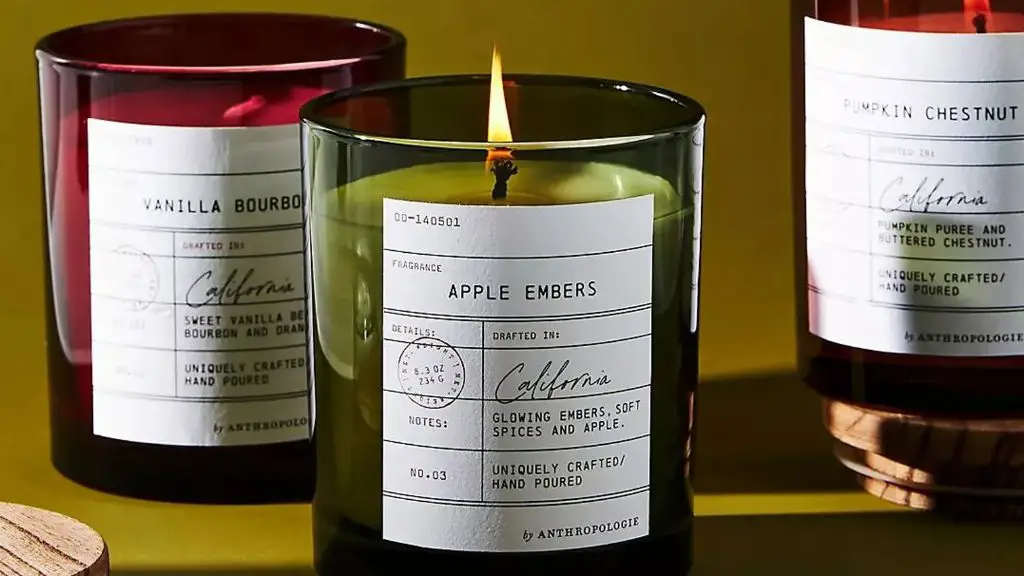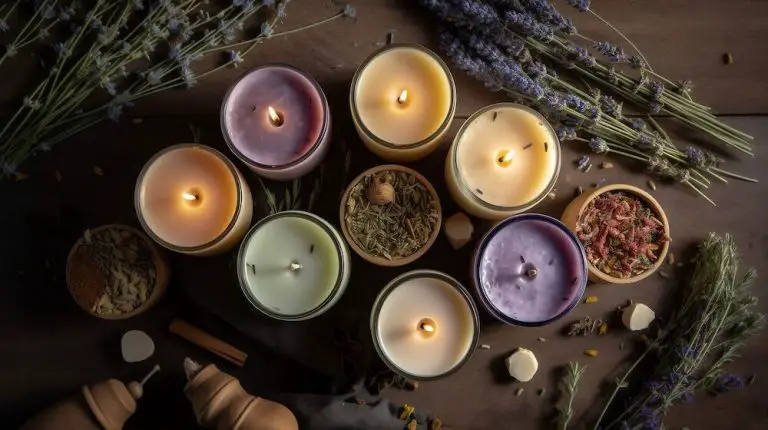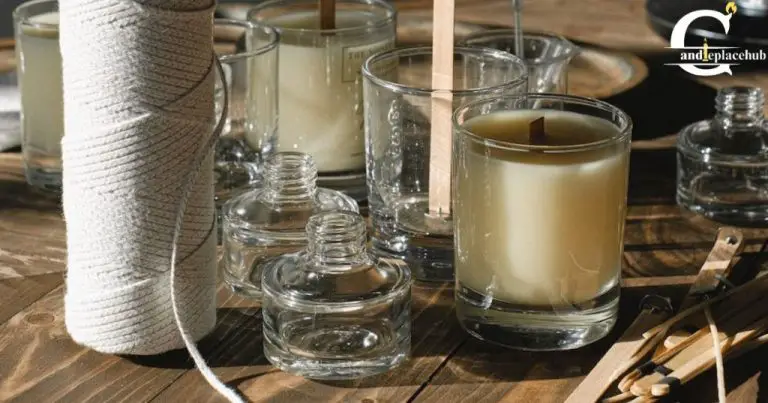How Many Drops Of Fragrance Oil Per Pound Of Wax?
Fragrancing wax is as much an art as it is a science. Finding the ideal ratio of fragrance oil to wax takes experimentation, patience, and a bit of trial-and-error. While there are general guidelines, the exact amount can vary based on personal preference, wax and fragrance type, desired scent strength, and other factors. Mastering how to properly infuse wax with alluring scents is a skill many candle makers eagerly seek to perfect. This guide will walk through the key considerations when adding fragrance oil to wax and share tips for achieving beautifully scented, well-balanced candles.
Purpose of Fragrancing Wax
The primary purpose of adding fragrance oils to candle wax is to enhance the scent and provide an appealing aroma when the candle is burned. Fragrance oils contain concentrated perfumes and essential oils that allow candle makers to infuse customized scents into their candles (1). This enables them to create candles with specific scent profiles like vanilla, lavender, pine, etc. The fragrance oils help mask any unpleasant odors from the wax itself and influence the mood or ambience the candle creates.
Without added fragrances, most candle waxes would emit little to no scent at all when burned. Beeswax and soy wax in their pure forms have mildly sweet, natural smells but lack strong aromatic qualities. Paraffin wax is odorless. So the inclusion of fragrance oils is key for making candles with noticeable, pleasing scents that fill a room (2). The artistry of candle making relies heavily on using the right fragrance blends and concentrations to achieve desired sensory experiences.
(1) https://www.candlemakingsupplies.net/when-should-you-add-fragrance-oil-to-your-candle
(2) https://lonestarcandlesupply.com/dos-and-donts-of-candle-making/
Factors That Impact Amount
There are a few key factors that impact how much fragrance oil you need per pound of wax when making candles:
Wax Type: The wax type used will greatly affect the fragrance load. For example, paraffin wax can hold 1-1.5 oz of fragrance per pound while soy wax may only hold 0.5-1 oz per pound. Beeswax and palm wax also typically require less fragrance than paraffin. The wax’s capacity to hold fragrance oil depends on its natural properties and additives.
Fragrance Type: Stronger fragrances like essential oils require less oil per pound of wax, while lighter fragrances need more. Sometimes you may need to use more drops of a weaker scent to achieve the desired aroma. The chemical composition impacts performance.
Personal Preference: How strong you want the candle scent also plays a role. Light, subtle scents only need around 0.5 oz per pound while strong hot throws may use up to 1.5 oz. Testing different ratios allows you to find your ideal fragrance level.

Recommended Ratios
When adding fragrance oil to wax for candles or other wax melts, most experts recommend sticking to a fragrance load between 6-10% of the wax weight (Village Craft and Candle). This means for every 1 pound (16 oz) of wax, you would use .6 – 1 oz of fragrance oil.
A commonly recommended starting ratio is 1 oz fragrance oil per 1 pound wax, or 10% fragrance load (Scandinavian Candle). This allows for ample scent throw without overpowering. However, the ideal ratio can vary based on wax type, vessel size, and personal preference.
Most candle making experts suggest testing different fragrance loads between 6-12% to find the right balance for each individual fragrance oil and wax blend. Always follow usage instructions and safety precautions from the manufacturer.
Testing for Scent Throw
Testing the scent throw of your fragrance oil blend before finalizing your candle is a crucial step. There are a few methods you can use to evaluate scent throw:
Flame Test – Add a few drops of fragrance oil to melted wax and let it pool. Light the wax and evaluate how far you can smell the scent when blown out. This tests how the fragrance interacts with heat. According to CandleScience, testing with a flame gives the best indication of hot throw.
Cold Throw Test – Add fragrance oil to melted wax and let it harden. Evaluate the cold scent throw by smelling the wax from different distances. Cold throw testing is fast but doesn’t account for how scent changes with heat.
Test Burn – Make a small candle with your oil blend and burn it, evaluating scent throw at different time intervals. Let the candle pool completely to test how the fragrance lasts through the entire burn. This gives the most realistic results.
No matter the method, be sure to test scent throw in the actual wax you’ll use in production. The wax composition impacts performance. Test at different fragrance load percentages too. According to BrambleBerry, testing is the best way to perfect your ideal fragrance blend.
Considering Fragrance Load
Fragrance load refers to the maximum recommended percentage of fragrance oil that should be added to a wax or candle formula. Going above the recommended fragrance load can lead to issues like poor scent throw, wax discoloration, frosting, oil rings, and sweating.
According to The Flaming Candle, “The ‘fragrance load’ or fragrance % is the manufacturers recommended maximum amount of fragrance that a particular wax can retain.” Each wax type – soy, paraffin, palm, etc. – has a different fragrance load capacity based on its formulation and properties.
Exceeding the fragrance load capacity can overwhelm the wax, leading to fragrance oils leaching to the surface or failing to properly adhere. It’s important to stay within the guidelines for each wax type when adding fragrance.
Avoiding Scent Fatigue
When working with fragrance oils, it’s important to be mindful of scent fatigue, also known as olfactory fatigue or “nose blindness.” This refers to the temporary inability to distinguish odors after prolonged exposure to them. With candle and wax making, overloading your products with fragrance can actually have diminishing returns.
According to research, scent fatigue occurs because “odorant molecules bind to receptor proteins in the nose that send signals to the brain. When continually exposed to the same odorant, these receptors get worn out from overstimulation and stop responding as strongly, leading to a reduced ability to smell the scent.”1
This is why you may be able to smell your candle or wax melt strongly at first, but then it seems to fade out. It’s not necessarily that the fragrance itself has gotten weaker or dispersed. Your nose and scent receptors have simply become fatigued.
The key is finding the right balance with fragrance load. Using too little may lead to poor scent throw and performance. But using an excessive amount in hopes of a stronger aroma can actually backfire. You risk both scent fatigue and irritating people’s nostrils.
According to experts, “A good rule of thumb is to use .5 to 1 ounce of fragrance oil per pound of wax.”2 Adjust up or down based on your preferences and testing.
Maintaining a lighter fragrance load allows the scent notes to shine through properly, without overwhelming noses into fatigue. It also helps prevent the fragrance from seizing the wax. So while it may be tempting to overdo it on fragrance, more is not always better when it comes to wax products.
Following Safety Precautions
When working with fragrance oils, it’s important to take safety precautions to avoid potential hazards.
Ensure proper ventilation when fragrancing wax. Work in a well-ventilated area to allow fragrance oil vapors to dissipate. Avoid breathing in concentrated fragrance oil fumes which can cause headaches, dizziness or other symptoms in some people. Use a fan or open windows if working indoors.
Wear proper equipment like gloves and long sleeves when handling fragrance oils to prevent skin contact. Fragrance oils can irritate skin for some people, resulting in redness or rashes. Gloves protect your hands and arms when measuring and mixing fragrance oil.
Clean up spills thoroughly and wash any skin that comes in contact with fragrance oils. Rinse with soap and water if fragrance oil spills on your hands or arms. Some fragrance oils can stain surfaces, so wipe up spills quickly.
Store fragrance oils properly in a cool, dry location out of direct sunlight and away from children and pets. Avoid sources of ignition like open flames, as some fragrance oils are flammable.
Follow usage and safety recommendations from the fragrance oil manufacturer. Never exceed the suggested usage rate as stronger scents don’t necessarily mean better results.
Top Fragrance Oil Tips
When working with fragrance oils, it’s important to follow best practices recommended by experts. According to candlemaking specialists, there are some key tips to keep in mind:
Always test oils for scent strength before fully committing to a blend. Add a drop of oil to unscented wax and sniff to determine potency (source: https://www.candlescience.com/learning/fragrance-oil-blending-101/).
Measure oils carefully using a gram scale or drops. Variations in amounts can significantly impact scent throw. A dropper is useful for counting drops consistently (source: https://www.wikihow.com/Use-Fragrance-Oils).
Note how different fragrance categories behave, like florals vs. musks. Adjust blends accordingly to achieve the desired effect.
Allow sufficient time for oils to fully cure before evaluating scent. It can take 1-2 weeks for the final fragrance to develop.
When blending, start with lower percentages and build up. It’s easier to intensify than scale back an overwhelming scent.
Store oils properly in a cool, dark place to maintain integrity and prevent fading.
Finding Your Ideal Blend
When blending fragrance oils, experimentation is key to finding your perfect, signature scent. Keep notes as you test different oil combinations and ratios so you can refer back to what works. Get feedback from others, as sometimes it takes a second nose to help identify the right balance. Here are some tips for blending oils successfully:
Start with 2-3 complimentary scents in different ratios like 60/40 or 70/30. Citrus and floral or woodsy and spicy blends are classic combinations to try first. Make small test batches to allow the scents to meld and cure, then evaluate the scent throw. Take notes on which blends you like best.
Next explore more complex blends with 3-5 oils at varying ratios like 50/30/20. Resist the urge to use too many oils at once. Let key notes shine through while secondary scents provide depth and dimension. Record your experiments and ask unbiased friends to test and give feedback.
Finally, do not give up if your first attempts are not right. Scent blending is an art and it may take testing many formulations to find the ideal synergy. Keep an open mind, adjust ratios as needed, and you will create something uniquely you.






